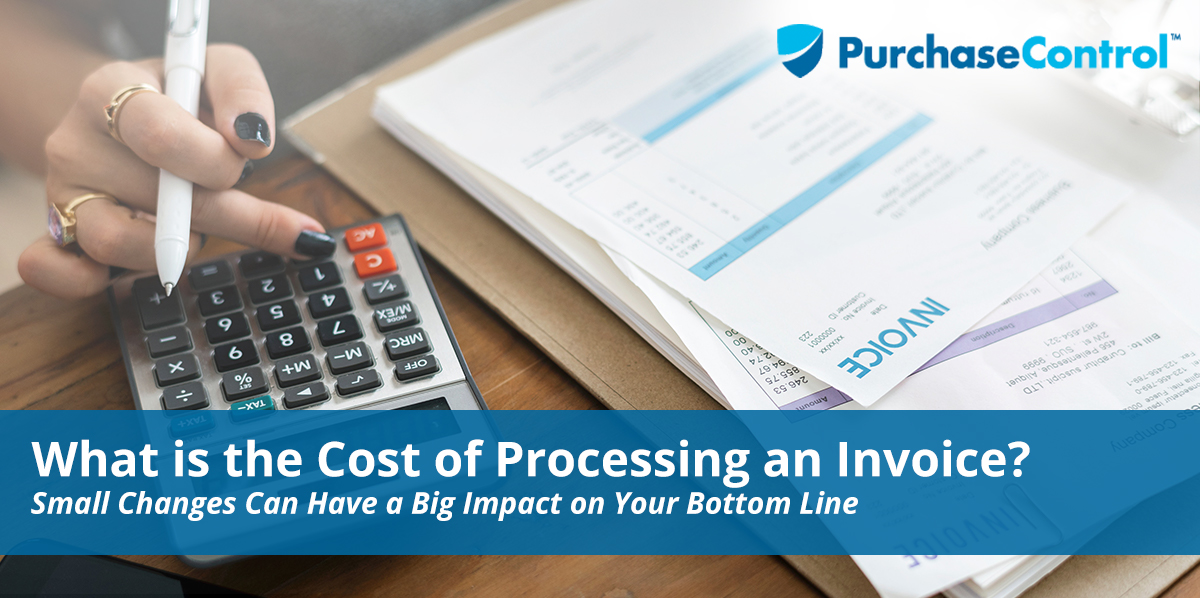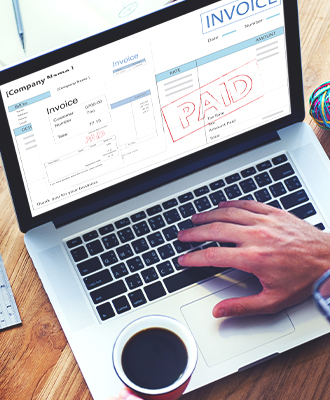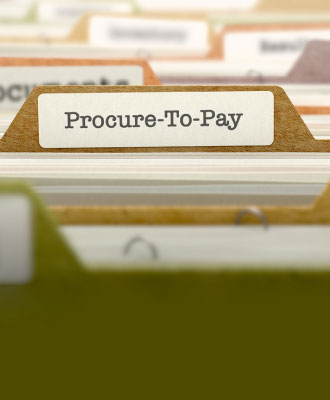Is your business being “nibbled to death?” One of the more frustrating aspects of building value and reducing total cost of ownership (TCO) within your business is dealing with incremental costs created by process or technological deficiencies. Some incremental costs, like those associated with accounts payable (AP) processes such as invoice processing, are often seen as an unavoidable part of doing business.
But the true cost that comes with suboptimal invoice processing is lost value. Fortunately, you can break free from the obsolescence of manual processing with the right approach, processes, and tech. And in doing so, you can begin to shift not only invoices, but your entire AP and procurement functions toward building value rather than simply cutting costs.
Why Invoice Processing Costs Matter
In addition to the costs associated with the goods and services for which they were issued, invoices can generate additional expense through error and delay. Consider this: if you’re still using manual invoice processing, you’re not alone; an estimated 90% of all invoices worldwide still are processed manually. But last-gen tech, along with paperwork piled on overworked staff, transform invoicing into a slow, laborious process that’s nibbling away at your bottom line with every passing second—especially if there’s an invoice exception or approval delay.
Worse yet? Those risks are just the beginning, since the data still has to be entered into your enterprise resource planning (ERP) software once it’s been approved for payment.
“Regardless of your company size or the number of invoices your AP team handles, manual invoice processing costs you more than it should in lost time, productivity, and wages.”
The Not-So-Mathmagical Costs of Manual Invoicing
Sadly, there’s no “magic number” for invoice processing costs; it depends on who’s doing the tabulating. Research firm Sterling Commerce puts the average cost of processing an individual invoice at between $12 and $30. Other firms narrow this gap to between $12.90 and $15. Some place it as high as $40.
The price, perhaps unsurprisingly, seems to be directly tied to both the complexity of your AP function and its relative efficiency—especially if you’re using automated invoice processing in addition to, or instead of, manual invoicing.
Regardless of your company size or the number of invoices your AP team handles, manual invoice processing costs you more than it should in lost time, productivity, and wages. Manual processing costs are taking a bite out of your bottom line through:
Direct Expenses
From paper and pens to postage and printer toner, physical invoices generate a lot of little expenses that add up fast. You’ll also need to pay storage costs, since paper invoices for both accounts receivable (AR) and AP need to be securely stored for auditing and reporting purposes. Add in shipping costs if you use a remote facility, and you might find yourself shelling out more to create and store an invoice than you did to pay it.
Indirect Expenses
These are the intangible costs of invoicing within the AR and AP process. After all, you need to pay someone to stuff envelopes and perform data entry, as well as track down errors and follow up on approvals. Every hour spent on invoices is one that can’t be devoted to more productive, higher-level tasks.
Hidden Costs
If indirect expenses are intangible, these costs are nigh on invisible—even if their impact isn’t. As its name implies, snail mail is slow, especially if you’re sending/receiving invoices, sending/receiving payment, and waiting for confirmation. In the meantime, you could easily tip into a negative cash flow situation and incur fees because you can’t pay other bills, or, for bills you’re paying on paper, rack up a late fee if the check takes a wrong turn in the post.
Errors only exacerbate the process, adding not only late fees and penalties, but more staff hours.
Calculating Your Costs
You can get a more precise estimate of your own manual invoicing costs by examining:
- Total invoice processing time (including time in the post)
- Total time spent reviewing invoices
- Total time spent identifying and correcting data entry errors, duplicate payments, etc.
- Storing and shipping costs for physical invoices
- Discounts lost and penalties incurred due to late payments, errors, etc.
- Total hours of labor spent by staff performing invoicing duties rather than their assigned functions.
Armed with this information, you can then calculate your own estimated costs of processing invoices by adding together staff costs, discounts lost, late fees, storage costs, and postal and shipping costs, and then dividing that amount by the total number of invoices processed to get the average cost of processing an invoice.
Automation to the Rescue
All of the headaches that come with manual invoice processing might make you want to throw your hands up and go back to the barter system. But you can cut your costs, and your frustration, without having to break out your merchant’s scales and stray livestock.
As of 2018, the American Productivity and Quality Center (APQC) reported that “top performers”—the top 25% of businesses evaluated—were spending an average of just $2.07 per invoice. Those in the bottom 25%, by comparison, spent nearly five times as much, with an average per-invoice processing cost of $10 or more. The difference? In large part, automation.
Modern purchasing software uses AP automation and artificial intelligence to stop invoices from devouring your time and money. Those thrifty top performers in APQC’s database help keep their invoicing costs low through their investments in automation.
AP automation trims costs and streamlines invoice management through:
- Elimination of paper and postage costs. No more piles of paper. No more storage and shipping fees for box after box of documents.
- Reduced labor costs. Your existing staff can focus on other priorities, and you don’t need to add staff just to handle paper invoices. Audits, both internal and external, are faster and more accurate.
- Improved accuracy. Invoices are cross-matched to POs and shipping documents. Vendors are pre-vetted and information is always up-to-date and added automatically. Without the need for data entry across systems, human error is vastly reduced.
- Faster approvals. Centralized communications and clearly defined roles, along with reminders to keep the process moving, mean fewer late fees and more early payment discounts.
- Reduced fraud risk. Secured, centralized data, cross-checking, electronic invoicing and advanced vendor management mean no more rogue spending. Exposure to check and invoice fraud is greatly reduced thanks to built-in verification.
- Greater productivity. Automation frees not only accounting, but management and other stakeholders from the need to micromanage invoicing tasks, creating more time for high-level tasks that support enterprise-wide goals while reducing stress.
The results can be impressive. Sterling Commerce reports that fully automated invoice processing can reduce per-invoice costs by nearly 90% while reducing errors by nearly 40%.
Trim the Fat From Your Invoice Processing Costs
Knowing the true cost of old-school invoicing is a strong motivator for change. Tap into the power of automation, and slice the value-draining stress, errors, and wasted time from your invoicing process. Your bottom line will thank you.
Save Time and Reduce Your Invoice Processing Costs With PurchaseControl.
Find Out How








